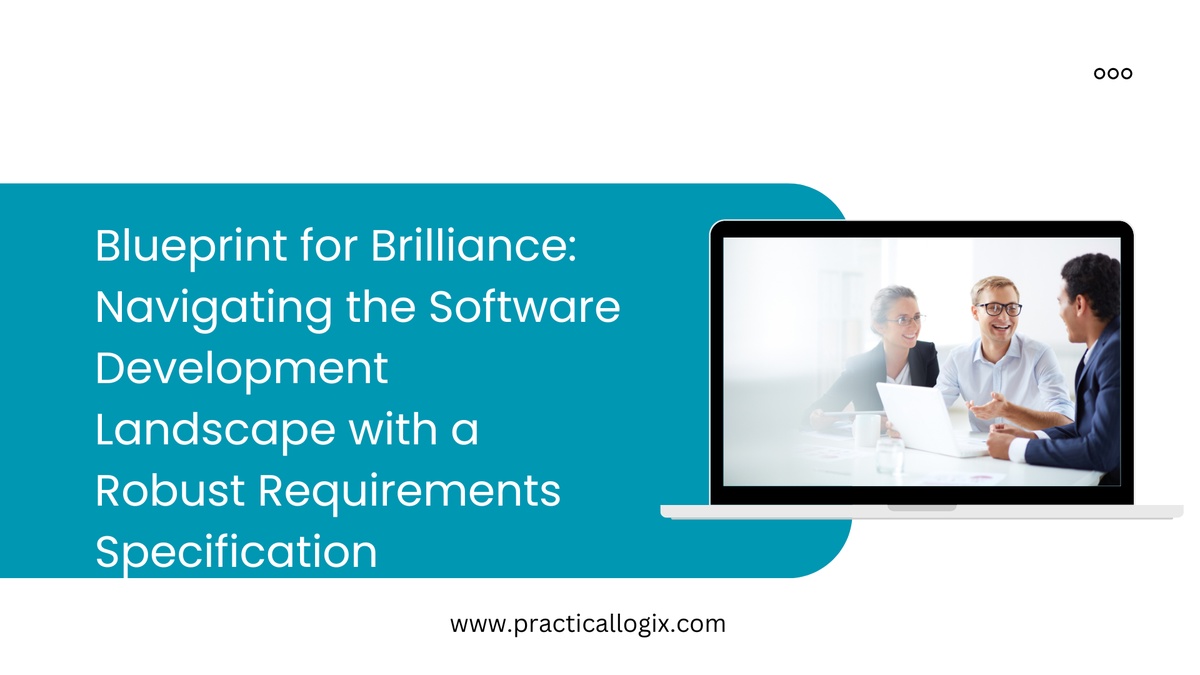In the rapidly evolving world of software development, the ability to seamlessly translate ideas into functional, efficient, and user-friendly applications is paramount to achieving success. A pivotal step in this journey is the creation of a comprehensive Software Requirements Specification (SRS). This document plays a crucial role as a guiding blueprint, laying the foundation for the entire development process. In this blog post, we will delve into the significance of a robust SRS and its pivotal role in steering the course towards excellence in software development.
Understanding the Software Requirements Specification
The Software Requirements Specification is a meticulous document that outlines both the functional and non-functional requirements of a software application. It acts as a crucial communication bridge between stakeholders, including clients, developers, and testers. By clearly defining the project's objectives, functionalities, constraints, and user expectations, the SRS provides a well-defined roadmap for the entire development team.
The Blueprint for Brilliance
1. Clear Definition of Objectives:
A well-crafted Software Requirements Specification (SRS) begins by clearly defining the project's objectives. This entails understanding the problem at hand, identifying the target audience, and establishing the core purpose of the software. By aligning everyone's understanding of the project's goals, the SRS sets the stage for a cohesive development effort.
2. Detailed Functional Requirements:
The functional requirements section of the SRS delves into the specific features and functionalities that the software must deliver. This includes user interactions, system behavior, data management, and any integrations with external systems. Providing comprehensive insights into these aspects ensures that the development team has a thorough understanding of the project's scope.
3. Non-Functional Requirements and Constraints:
Beyond functionality, an excellent SRS takes into account non-functional aspects such as performance, security, and scalability. It also outlines any constraints that may impact the development process, such as budgetary limitations or technological dependencies. Addressing these factors from the outset helps manage expectations and mitigate potential roadblocks.
4. User Expectations and Experience:
An integral part of the SRS is capturing the end user's expectations and the desired user experience. This includes user stories, scenarios, and any specific design preferences. By prioritizing the user perspective, the SRS ensures that the final product closely aligns with the intended audience's needs and preferences.
5. Communication and Collaboration:
The SRS is not a static document but a living reference throughout the development lifecycle. It promotes effective communication and collaboration among team members, stakeholders, and clients. Regular reviews and updates to the SRS facilitate accommodating changes, addressing emerging challenges, and refining the development roadmap.
Conclusion
In the competitive realm of software development, a well-defined Software Requirements Specification serves as a guiding beacon, illuminating the path to excellence. It encapsulates the project's objectives, functionalities, constraints, and user expectations, providing a clear roadmap for successful development. By investing time and effort in creating a robust SRS, development teams can confidently navigate the complexities of software development, ensuring the delivery of a high-quality, user-centric product. As the proverb goes, a journey of a thousand miles begins with a single step, and in the world of software development, that crucial step is the creation of a comprehensive Software Requirements Specification.


No comments yet